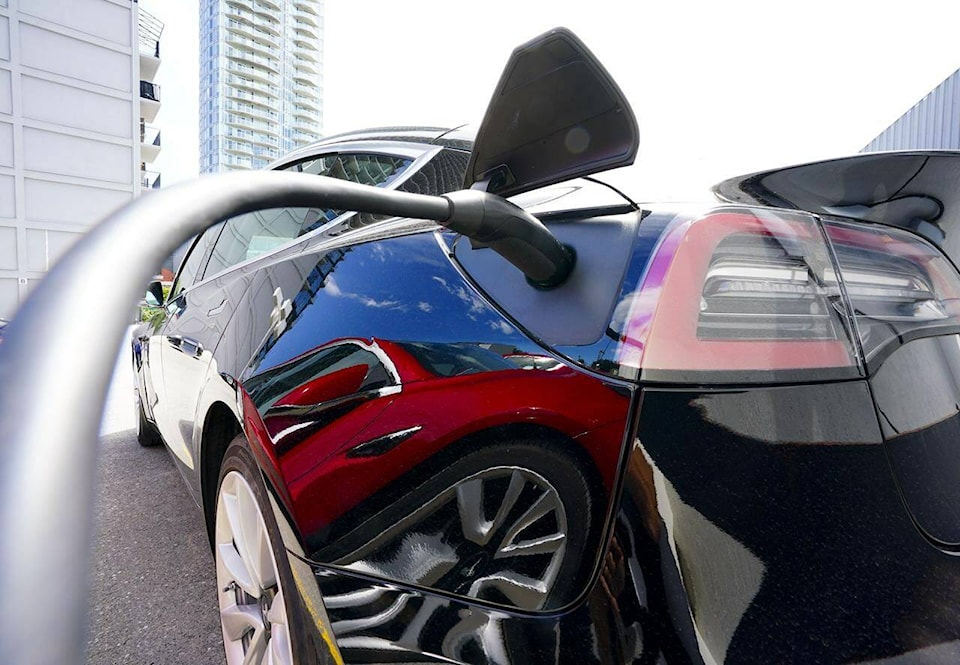Fire departments are looking for new tools and training to respond to the growing numbers of electric vehicles on the road.
Among the new pieces of equipment Blackfalds Fire Department has added are a pair of “emergency plugs” that are used to ensure an electric vehicle is immobilized so firefighters can safely extricate occupants or put out a fire.
“Electric vehicles do present different challenges, ” said Blackfalds Fire Chief Robert Cote on Wednesday.
The department has already responded to two incidents involving electric vehicles. In response, they ordered the emergency plugs, which took eight months to arrive.
Cote said one of the dangers of electric vehicles at collision scenes is their near-soundless engines.
“When we got to an accident scene we don’t know if it’s turned off or it’s still running,” he said. “If the occupant sitting in the driver’s seat hits that pedal it’s going to take off.”
The plug is inserted into the vehicle’s charging port. It tricks the computer system into thinking the vehicle is charging and the engine shuts off.
There is not any other electric vehicle-specific equipment on Blackfalds Fire Department’s list now, but that could change.
“We’re always looking at what other fire departments are doing across North America,” he said.
Blackfalds firefighters are also going to undertake special training in April to learn how best to deal safely with electric vehicles and their powerful lithium-ion batteries.
Cote said one of the challenges of dealing with electric vehicle is the batteries are under the floor and sealed off.
“Trying to get water into the battery is a new avenue to try to figure out.”
The U.S.-based International Fire Chiefs Association put out a one-page bulletin in 2021 in response to the growing numbers of electric vehicle incidents firefighters had to tackle.
Among its recommendations is that first responders ensure they have lots of water available — 11,000 to 30,000 litres (3,000 to 8,000 US gallons) — to cool damaged batteries down. That’s about 10 times more water than usually used for a vehicle fire. Various media stories can be found online about fire departments needing massive amounts of water — 90,000 litres in one case in Austin, Texas — to put out an electric vehicle fire.
Firefighters are also warned that once the fire is put out “sustained suppression on the battery pack may be necessary.”
Fire departments should be ready to remain on site for more time than usual because batteries can re-ignite. Even parts or cells of the battery that did not catch fire at the time of the incident can undergo “thermal runaway” if they have been damaged.
To add to difficulties, since the batteries are sealed it can be almost impossible to detect what cells have been damaged.
Since the batteries are bigger, a fire can give off more toxic gases.
Cote said firefighters already wear full respiratory gear when handling combustion engine vehicle fires because of the toxic chemicals released by burning plastics and fluids, including battery acid.
